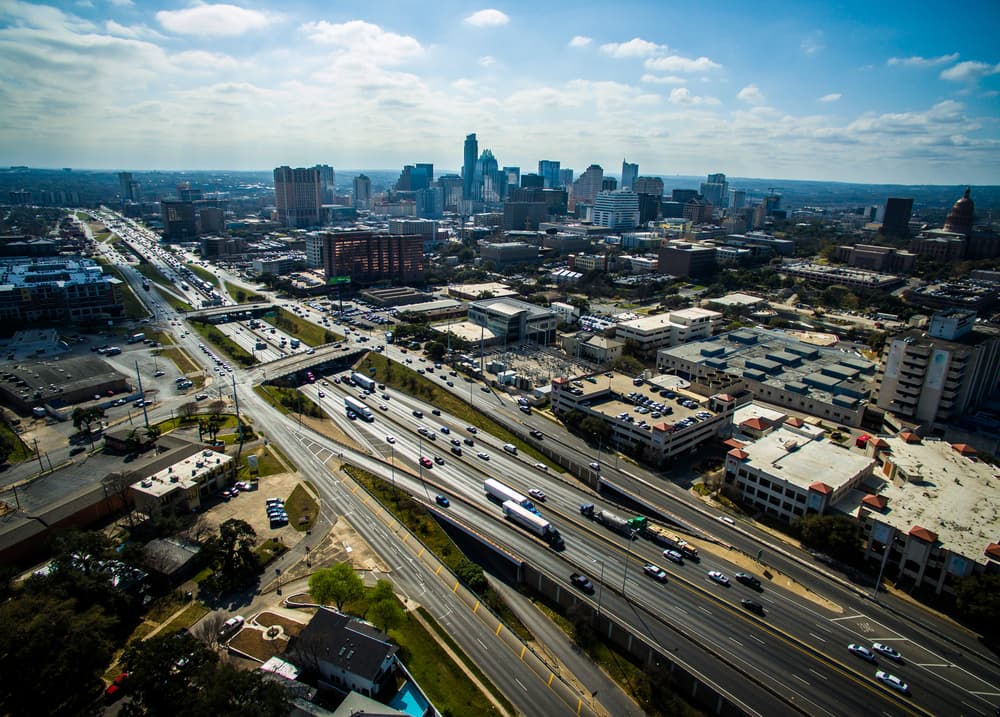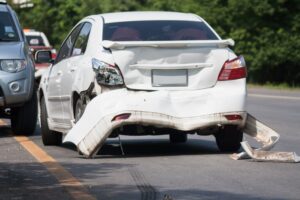Austin’s Most Dangerous Intersections

Traffic intersections in Austin, Texas, can be dangerous, especially when other drivers violate traffic laws or drive distracted or intoxicated. When other drivers fail to obey traffic control devices and stop signs, speed, and commit other road-rule violations, drivers and passengers on the receiving end may suffer debilitating and sometimes fatal injuries.
If you sustained injuries in an Austin traffic intersection accident, always obtain the legal help you need as soon as possible. A car accident lawyer in Austin can aggressively advocate for your legal interests throughout every step of the process and work to secure the full financial compensation you deserve for your injuries.
Where Are Austin’s Most Dangerous Traffic Intersections Located?
In Austin, Texas, several intersections have gained notoriety as some of the most dangerous due to a higher incidence of traffic incidents. Understanding these locations can raise awareness and increase caution among drivers.
One notable intersection is Lamar Boulevard and Parmer Lane. Known for heavy traffic and complex merging patterns, this intersection poses challenges for drivers navigating multiple lanes and turning lanes. This vicinity’s mix of residential and commercial areas contributes to congestion and heightened accident risks.
The intersection of Martin Luther King Jr. Boulevard and Interstate 35 is another area renowned for its high accident rate. The combination of heavy interstate traffic and local thoroughfares creates a complex traffic dynamic, leading to increased accident risks. Ongoing efforts to improve infrastructure and traffic management aim to address safety concerns in this location.
A blend of residential and commercial areas results in increased traffic flow at the intersection of East Riverside Drive and South Pleasant Valley Road. The proximity to popular destinations, such as Lady Bird Lake and the Oracle campus, adds to the congestion. The complex layout of this intersection has contributed to its reputation as one of Austin’s more challenging traffic spots.
The intersection of Anderson Lane and Burnet Road is another area with a heightened risk of accidents. High traffic volumes, proximity to shopping centers, and numerous turn lanes can create a challenging environment for drivers. This intersection’s unique characteristics contribute to its reputation as a hotspot for traffic incidents.
In addition, the convergence of Slaughter Lane and South 1st Street has an elevated accident rate. This region’s mix of residential areas, schools, and shopping centers adds to the complexity of traffic patterns, making it a focal point for safety concerns.
Common Causes of Traffic Intersection Accidents in Austin
Traffic intersection accidents in Austin, Texas, often result from various factors, many of which are due to driver negligence. The following are common causes of traffic intersection accidents in Austin, Texas:
- Distracted Driving — One of the leading causes of intersection accidents is distracted driving. Drivers using smartphones, adjusting in-car entertainment systems, or engaging in other distractions divert their attention from the road, increasing the risk of collisions.
- Running Red Lights — Disregarding traffic signals and running red lights significantly contributes to intersection accidents. Negligent drivers who fail to obey traffic signals put themselves and others at risk of T-bone collisions or side-impact accidents.
- Speeding — Excessive speed, especially when approaching intersections, reduces a driver’s ability to react quickly to changing traffic conditions. Speeding increases the severity of collisions and the likelihood of accidents occurring at intersections.
- Failure To Yield the Right-of-way — Negligent drivers who fail to yield the right-of-way at intersections contribute to many accidents. This can occur when making turns, merging lanes, or entering intersections without giving the proper right-of-way to other vehicles.
- Impaired Driving — Driving under the influence of alcohol or drugs is a significant factor in intersection accidents. Impaired drivers exhibit diminished judgment, slower reaction times, and compromised motor skills, leading to an increased risk of accidents.
- Aggressive Driving — Aggressive behaviors such as tailgating, weaving between lanes, and making abrupt lane changes contribute to intersection accidents. These behaviors create an unpredictable and hazardous environment for other drivers.
- Inadequate Signaling — Failing to use turn signals or using them incorrectly can lead to confusion among other drivers, increasing the risk of collisions. Adequate signaling is essential for communication between drivers at intersections.
- Poor Weather Conditions — Adverse weather conditions like rain or fog can contribute to intersection accidents. Reduced visibility and slippery road conditions require drivers to exercise additional caution, which can lead to accidents.
- Inexperienced Drivers — Inexperienced or novice drivers may struggle to navigate complex intersections, leading to errors in judgment and unexpected maneuvers contributing to accidents.
- Faulty Traffic Lights or Signs — Malfunctioning or poorly maintained traffic signals and signs can confuse drivers and disrupt traffic flow at intersections, leading to accidents.
Addressing the common causes of intersection accidents requires a combination of responsible driving practices, adherence to traffic laws, and ongoing efforts to improve traffic infrastructure. Increased public awareness and educational campaigns can play a crucial role in reducing intersection accidents resulting from drivers’ negligence in Austin, Texas.
Injuries in Traffic Intersection Accidents
In traffic intersection accidents in Austin, Texas, resulting from the negligence of other drivers, the injuries drivers and passengers sustain can vary widely in severity. The dynamics of these collisions often influence the types of injuries sustained:
- Whiplash Injuries — The abrupt impact of intersection accidents frequently leads to whiplash and neck injuries. The forceful back-and-forth motion can strain the muscles and ligaments in the neck, causing pain and restricted mobility.
- Head Injuries — Trauma to the head is common in intersection accidents. Even with the protection of airbags, occupants may experience head injuries, ranging from concussions to more severe traumatic brain injuries (TBIs).
- Chest and Abdominal Injuries — The deployment of airbags can protect against certain injuries, but occupants may still sustain chest and abdominal injuries. These can include contusions, fractures, or internal injuries due to an impact with the steering wheel or dashboard.
- Fractures and Broken Bones — The sheer force of an intersection collision can lead to fractures and broken bones, affecting limbs, ribs, or the pelvis. Occupants may suffer multiple fractures, depending on the nature of the impact.
- Back and Spinal Cord Injuries — The spine is vulnerable in accidents, and drivers and passengers can sustain back injuries, such as herniated discs or spinal cord damage. These injuries may result in chronic pain, limited mobility, or long-term disability.
- Soft Tissue Injuries — Impact forces can cause damage to soft tissues, including muscles, tendons, and ligaments. Soft tissue injuries can lead to pain, swelling, and difficulty with movement.
- Internal Injuries — Blunt force trauma in intersection accidents can cause internal injuries to organs. These injuries may not be immediately apparent, making it crucial for individuals involved in accidents to seek medical attention promptly.
- Psychological Trauma — Intersection accidents can leave lasting psychological effects on drivers and passengers. Anxiety, post-traumatic stress disorder (PTSD), and other psychological traumas may develop due to the traumatic nature of the collision.
- Facial Injuries — Impacts with the airbag, steering wheel, or other objects in the vehicle can result in facial injuries. These may include lacerations, fractures, or damage to the eyes, nose, or jaw.
- Burn Injuries — In rare cases where intersection accidents lead to fires or explosions, drivers and passengers may suffer burn injuries. These injuries can result in scarring and require specialized medical attention.
The injuries sustained in traffic intersection accidents due to the negligence of other drivers highlight the need for comprehensive medical evaluation and treatment. Seeking immediate medical attention is crucial to address both apparent and hidden injuries, and individuals involved in such accidents need to consult with healthcare professionals to ensure a thorough assessment and appropriate care for their physical and psychological well-being.
Recovering Financial Damages for Traffic Intersection Accident Injuries
When individuals suffer injuries in a traffic intersection accident in Austin, Texas, due to someone else’s negligence, they may be eligible to recover both economic and non-economic damages to address the full extent of their losses.
Economic damages are tangible, measurable losses for which individuals may seek compensation after a traffic intersection accident. These damages cover all medical costs incurred due to the accident, including emergency care, hospital stays, surgeries, medications, rehabilitation, and ongoing medical treatments. Besides that, victims can recover expenses related to rehabilitation services, such as physical therapy and occupational therapy, aimed at restoring functionality and improving quality of life.

Victims can also seek compensation for income lost during their recovery period. This includes income lost due to missed work, inability to perform job duties, and any future loss of earning capacity from accident-related injuries. Furthermore, economic damages may cover the costs of repairing or replacing damaged vehicles and personal belongings. Finally, in the unfortunate event of a fatality resulting from an intersection accident, economic damages may cover funeral and burial expenses, alleviating the financial burden on the victim’s family.
Non-economic damages are intangible losses that are challenging to assign a precise monetary value but are equally important for addressing the overall repercussions of the accident. Non-economic damages compensate victims for physical pain, emotional distress, and mental anguish resulting from the intersection accident. The accident victim may also seek damages for the loss of companionship, support, or intimacy the victim’s spouse or family members have experienced due to the injuries sustained.
In addition, victims can pursue compensation for psychological trauma, including post-traumatic stress disorder (PTSD), anxiety, depression, or other mental health issues requiring treatment. Furthermore, victims may seek damages for the diminished ability to engage in and enjoy activities that were once a significant part of their lives. Finally, an accident victim can seek compensation for the physical changes resulting from injuries, addressing any disfigurement or scarring that may affect the victim’s appearance and self-esteem.
Understanding the distinction between economic and non-economic damages is crucial for individuals seeking compensation after a traffic intersection accident in Austin, Texas. Pursuing a comprehensive claim that accounts for both tangible financial losses and intangible emotional and physical tolls ensures that victims receive fair compensation for the full damages they have incurred due to someone else’s negligence.
Successfully Proving the Legal Elements of a Traffic Intersection Accident Case
Proving the legal elements of a traffic intersection accident claim or lawsuit in Austin, Texas, resulting from someone else’s negligence, requires a thorough and well-documented approach. Accident victims need to do the following to establish their case:
- Seek Medical Attention Immediately — After an accident, prioritize your health by seeking immediate medical attention. Not only is this crucial for your well-being, but medical records also serve as essential evidence in establishing the extent and nature of your injuries.
- File a Police Report — Report the accident to the police and ensure they file an official report. This report can be an unbiased account of the incident and may include statements from involved parties and witnesses.
- Preserve Evidence — Preserve any evidence related to the accident. This includes keeping records of medical bills, repair estimates, and any other documents that demonstrate the financial consequences of the accident.
- Refrain from Making Statements — Avoid making statements or admissions of fault at the scene or to insurance adjusters. Allow the facts and evidence to speak for themselves. Consult with an attorney before providing statements.
- Obtain Expert Opinions — Depending on the complexity of the case, consult with accident reconstruction specialists, medical experts, or other professionals who can provide expert opinions to support your claim.
- Adhere to the Statutes of Limitations — Be aware of the applicable statutes of limitations for filing a personal injury claim or lawsuit in Texas. Failing to file within the specified timeframe may result in losing the right to seek compensation.
- Consult with an Experienced Attorney — Engage the services of an experienced car accident attorney in Austin, Texas. An attorney can guide you through the legal process, help gather evidence, assess the strength of your case, and represent your interests in negotiations or court.
By following these steps, accident victims can establish a solid foundation for their traffic intersection accident claim or lawsuit. Seeking professional legal guidance is crucial to navigating the complexities of the legal system; a skillful attorney can effectively present the evidence to support your case.
Call a Car Accident Lawyer in Austin About Your Intersection Accident Today

Ted R. Lorenz, Austin Car Accident Lawyer
If you suffered injuries in a traffic intersection accident in Austin, Texas, a knowledgeable Austin personal injury attorney can manage every step in the legal process for you. Specifically, your attorney can take the necessary steps to investigate your accident circumstances thoroughly and can file a claim with the at-fault party’s insurance company in a timely manner. Furthermore, if litigation becomes necessary in your case, your lawyer can file a timely lawsuit and litigate your case to a prompt conclusion in the court system.
